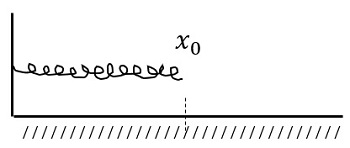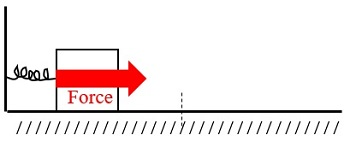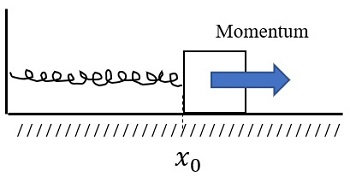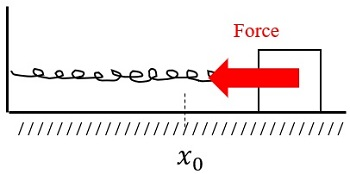The restoring forces are mainly responsible for the oscillations of the system. So, the restoring forces are always involved in the movement of the masses which are attached to the simple pendulums and springs. When someone is jumping off a bridge over the river, that is attached to the special kind of the elastic cord which causes them to oscillate in an upward and downward position after the reach almost near the surface of the river. This is a significant example of the oscillation system. The other type of the oscillation system is that when the mass is tied to the cord, at one end and then it is made to swing back and forth that is known as the pendulum. The rope swing can also be considered as a good example of the oscillation system.
Spring Oscillators
Let’s assume that there is the frictionless surface having a spring that is attached upright. A mass is attached to the spring. At this length of the spring shown in the figure below, there are no forces that are acting on the spring.

In the next figure, a mass is attached to the spring.

When the mass is allowed to go, then a force is applied by the spring that varies greatly with the length of the compressed spring, until it reaches its rest length. This causes the acceleration of the mass until the equilibrium position is obtained. The next diagram is showing the mass at the equilibrium position.

Even though at this location, no spring force is acting on the mass, and due to its momentum, it continues its movement right. As soon, as there is the stretching of the spring past the equilibrium point, a force is applied in the opposite direction of the motion of the mass. The diagram in the next figure is showing the mass after it has passed the point of equilibrium.

Here the direction of force is opposite to the mass movement. Eventually, the mass will stop and then it will accelerate back towards the position of the equilibrium. Again, the force of the spring is greatly varied with the distance as the spring stretches past the point of equilibrium. The force of the spring is the restoring force as the spring always applies a force towards the point of equilibrium. After the mass has reached the point of equilibrium on its way back to the starting point, no restoring force will be applied to the mass. While for the spring constant in the physics the term force constant is also used.
